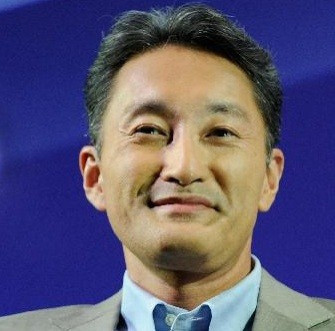Sony Losses 2011: Loss Projection Doubles To Record $6.4 Billion; Why Hirai Should Fire The Board
OPINION

Not 24 hours after Sony announced it would slash about 10,000 jobs by the end of the year, the Japanese electronics maker announced on Tuesday that it has again doubled its annual net loss to a record $6.4 billion. Kazuo Hirai, the company's new president and CEO hired 10 days ago, will take painful steps to revive Sony, and will unveil a revival strategy at a Thursday press briefing.
There have been several reasons for our poor results, said Masaru Kato, Sony's CFO, at a news briefing in Tokyo on Tuesday. We are aiming for a rebound, and for this we have made management changes.
The new annual estimate is Sony's fourth revision of its original forecast. The company had already more than doubled its loss forecast for fiscal 2011 on April 5 to $2.9 billion, blaming floods in Thailand, poor foreign exchange rates and a failed partnership with Samsung, the world's No. 1 maker of TVs and flat screens.
TVs were down almost 30 percent in sales. Sales for home audio, video and digital imaging also dipped, and while Sony cut the price of its Playstation 3 in August, sales of the gaming console are still suffering.
To prevent a mass exodus of investors, Sony said it would bounce back by March 2013 with an operating profit of $2.2 billion, but the company's sales of LCD TVs have been extremely poor -- a microcosm of the general maiase for TV makers. Between Sony, Sharp and Panasonic, poor LCD TV sales have contributed to a combined $17 billion in losses.
We can improve shareholder equity in several ways, including bolstering cash flow or selling assets, Kato said. Equity finance is also an option, but at this moment we have no concrete plan to do so.
Kato would not confirm the 10,000 job losses on Tuesday, but he did note that the company is making cuts within its chemical business and small LCD operations. What Kato didn't say is that Sony plans to sell off its chemical products division, which will cut about 3,000 workers, and is also going to make cuts within its small and midsize LCD operations. Kato did not say if the job cuts would occur in Japan, overseas, or both.
On April 1, the same day Sony named Kazuo Hirai its new president and CEO, the Tokyo-based company merged its 2,000-person Mobile Display Unit with other small LCD panel businesses from Toshiba and Hitachi to form a new group called Japan Display. This move parallels an earlier move made by Samsung, which similarly spun off its LCD business division to launch a new entity called Samsung Display Co. That company, which also went live on April 1, would also review a merger of the company's LCD and OLED operations as OLED tech, which is primarily featured in Samsung's mobile devices, gains traction. Considering how OLED wowed audiences at CES 2012 with its gorgeous displays and wafer-thin designs, Sony simply wants to keep in stride with Samsung and LG in the greater display race.
The spin-off will allow us to make quicker business decisions and respond to our clients' needs more swiftly, said Donggun Park, Samsung's executive VP of its LCD business. Through enhancements in business competitiveness, we will continue to provide superior products and services for the market.
The new Japan Display division could help Sony boost its flat screen sales, but some analysts believe Sony is no longer a competitive player in the TV and flat screen game. This could change if Sony similarly takes to jump on the OLED bandwagon, which is picking up steam for its ability to produce richer colors and better pictures than LCD in a limited amount of space. Think of large, gorgeous TV displays that are thinner than a pencil.
Under a new CEO, it's easier to cut jobs or go in a new direction, said Yuuki Sakurai, the head of Fukoku Capital, a fund management firm based in Tokyo. One of the things I'd like to see is that they shift their resources to other areas outside TVs ... If they stick to TVs, they may have to fight a war they may not be able to win.
Sony, which employs roughly 168,200 workers on a consolidated basis, may also ask its seven-person executive board to return their bonuses to the company. The board includes Howard Stringer, the former CEO of Sony, who now serves as the company's chairman. However, if Sony looks to thrive again, Hirai may consider cutting his entire executive staff. When Steve Jobs returned to Apple in 1997, he kept two board members and fired everyone else. To prove to investors that you've changed, profound changes need to take place at the very top, and Hirai needs to acknowledge that and pull the trigger.
Hirai hopes these layoffs can show investors that Sony is serious about becoming a lean, agile company that can compete with the big boys of display-making. A $6.4 billion projected loss for the year is the last straw for Sony, which hasn't seen profit in more than four years. Kazuo believes Sony could be a potential core business for the company's future, but only time and experimentation will tell for sure. If the company looks to move ahead, it must be smart about its fiscal decisions, and spinning off its display business is a good start. It may be too late for the Walkman, but it's never too late to innovate something we've never seen before.
© Copyright IBTimes 2024. All rights reserved.






















